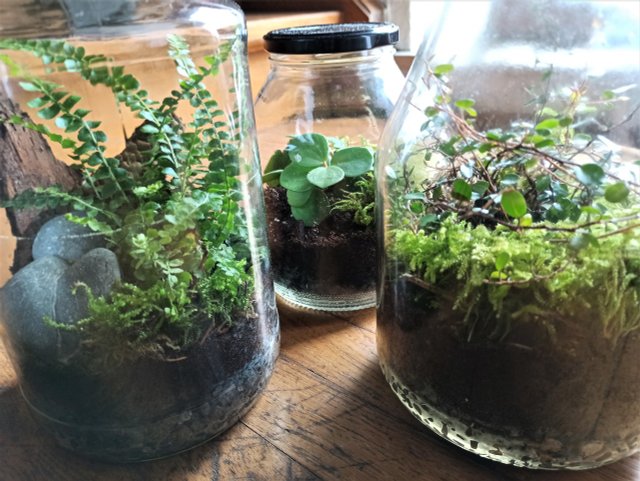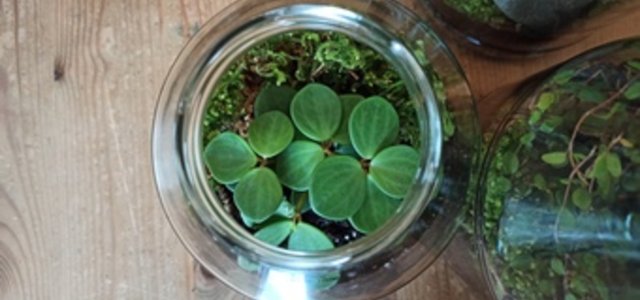
Bottle gardens are quick to set up and real eye-catchers on your desk. We’ll show you how to create your own mini-ecosystem that, ideally, you’ll never have to open again.
Contents
Bottle garden ecosystem: How does it work?
Bottle gardens are probably the easiest gardens of all – because theoretically you never have to water the mini biotopes in screw-top jars. This is because an ecosystem of its own is created in the airtight and watertight glass container. Bottle gardens already existed in the 19th century. However, the Briton David Latimer gave them new popularity. He is said not to have opened his impressive wine balloon since 1972.
So, ideally, you can leave the plants to their own devices. This works because a kind of ecosystem is set up in the glass in a very small space. The water and sunlight added initially are enough to keep the ecosystem going. In the process, the water evaporates, condenses on the glass lid and returns to the cycle. Microorganisms in the soil provide nutrients and ensure that dead plant matter decays. This closed ecosystem is also called the hermetosphere.
Ideal, then, for anyone who wants to bring some greenery into the home without much effort. The homemade bottle garden is not only low-maintenance and sustainable, but also almost completely free.
Create a mini biotope: Here’s what you need to keep in mind
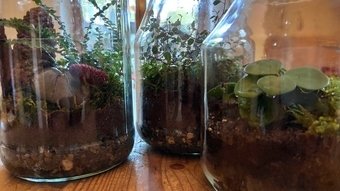
Which plants are suitable?
Due to the climate in the bottle, mainly exotic plants thrive in the bottle garden. They prefer a warm, humid climate and can cope with nutrient-poor soil. They should also grow as slowly as possible. Well suited are for example:
- small ferns
- mosses
- small-leaved ivy
- dwarf green lilies
For particularly decorative and colorful bottle gardens you can:
- Mini orchids
- bromeliads
- or use carnivorous plants .
Succulents or cacti are less suitable, as they do not tolerate the high humidity. With these plants, the container should remain open.
Tip: If you want to make your bottle garden completely free, you can also look around in nature for suitable plants. Mosses and ferns grow in our local forest. You can even take the soil from the forest.
Choose the right bottle
Basically, all glass jars with lids with a capacity of two liters or more are suitable – the bigger, the better! You can find large screw-top jars in supermarkets, for example, where large quantities of pickles are sold. Alternatively, you can also look around at the glass container at the recycling center – there is almost always something usable there. Glass jars with thin necks are no problem: You can fill the bottle with the help of a funnel, a long stick or tweezers. It’s a bit of fiddling, but it works.
It is important that you rinse the glass container with hot water beforehand. This will kill any germs that may be present, which will prevent mold later on.
Create a bottle garden: You need these utensils
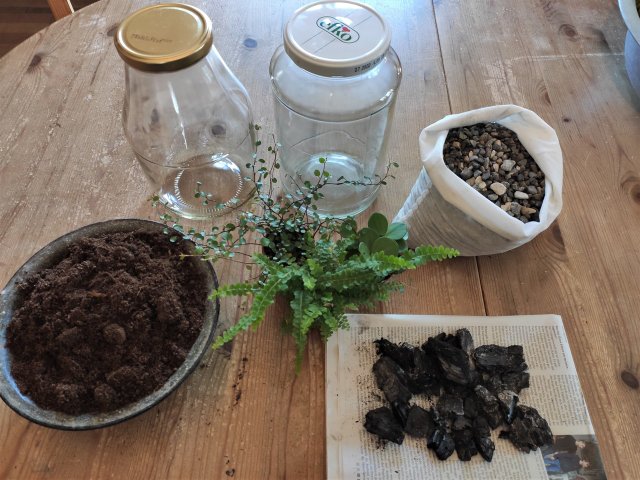
The bottle garden consists of several layers. For this you need the following materials:
- Bottle: any sealable glass with a volume of at least two liters is suitable.
- Drainage: The drainage ensures that the water can drain away and the roots do not start to rot. Gravel, brick and basalt chippings and expanded clay are suitable for this purpose.
- Charcoal: Above the drainage is a little crushed charcoal, which counteracts the formation of mold.
- Substrate: In order for the plant to develop roots and grow, it needs soil. Here you can use conventional garden or potting soil, but it should be as low in nutrients as possible.
- Plant: Slow-growing houseplants that thrive in a warm, humid climate are best.
- Decoration: To make your bottle garden particularly decorative, you can place stones, pieces of wood or empty snail shells in the glass.
- Water: In the last step, you need to water your mini biotope once.
Step-by-step instructions for the bottle garden
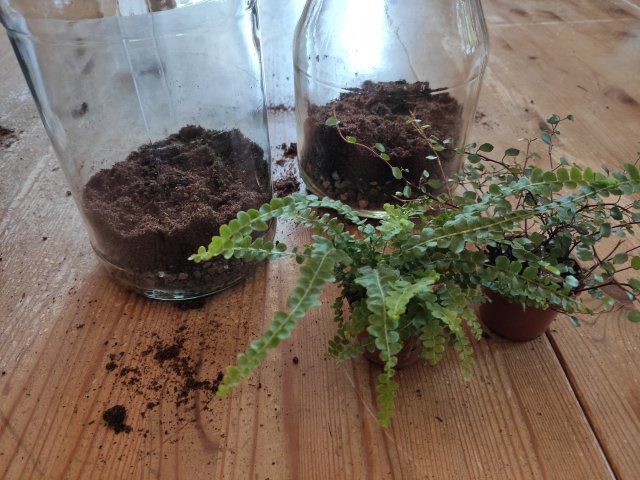
- First comes the drainage in the jar. For this, add a layer of pebbles about two to five centimeters high into the jar.
- Spread about two tablespoons of charcoal on the drainage. To do this, chop the charcoal into pieces about 0.5 centimeters in size – this can be done in a garbage bag with the help of a rolling pin, for example.
- Now fill the jar with three to four centimeters of soil.
- Press a hollow into the soil and place the plant in it. Make sure that the plant has enough space and do not put too many plants in one jar. Press the soil lightly.
- At the edge you can optionally spread some moss on the soil and press it lightly as well. If there is still some forest soil attached to the moss, all the better.
- Water the bottle garden with (preferably low-calcium) water. Be careful not to over water – the soil should be well moist, but no water should collect at the bottom of the jar.
- Leave the jar open for a while until the water has evaporated somewhat. If condensation collects on the rim of the jar after closing, this is a sign that there is too much water in the jar. Then simply leave the jar open for a few days so that excess water can evaporate.

So quickly you have created your own little ecosystem. The bottle garden feels especially at home in bright places without direct sunlight. A shady spot on the desk or a north-facing window, for example, are ideal.
If an optimal balance has not yet been established, you may have to open the jar and water it from time to time. Therefore, you should always keep an eye on your little ecosystem – also to prune the plant if necessary.
